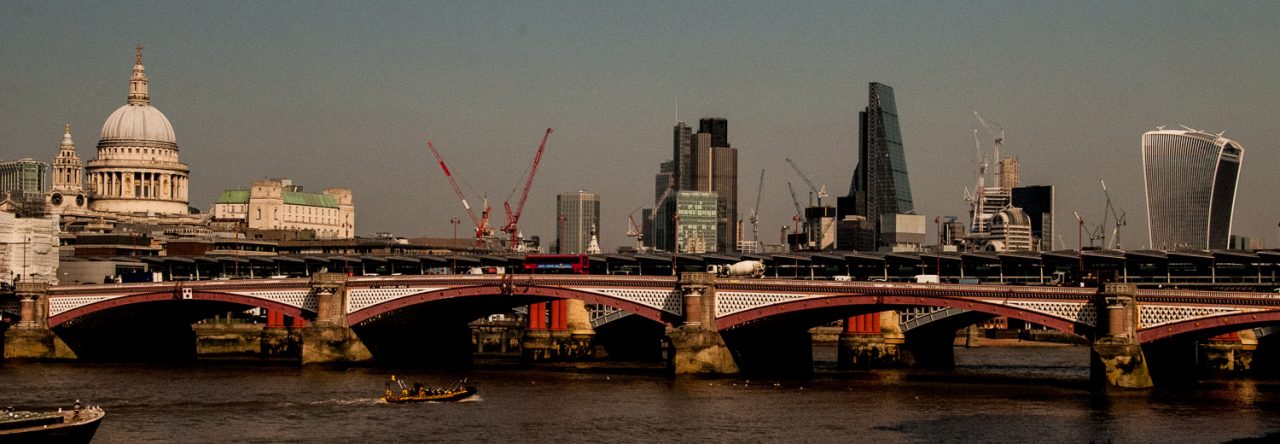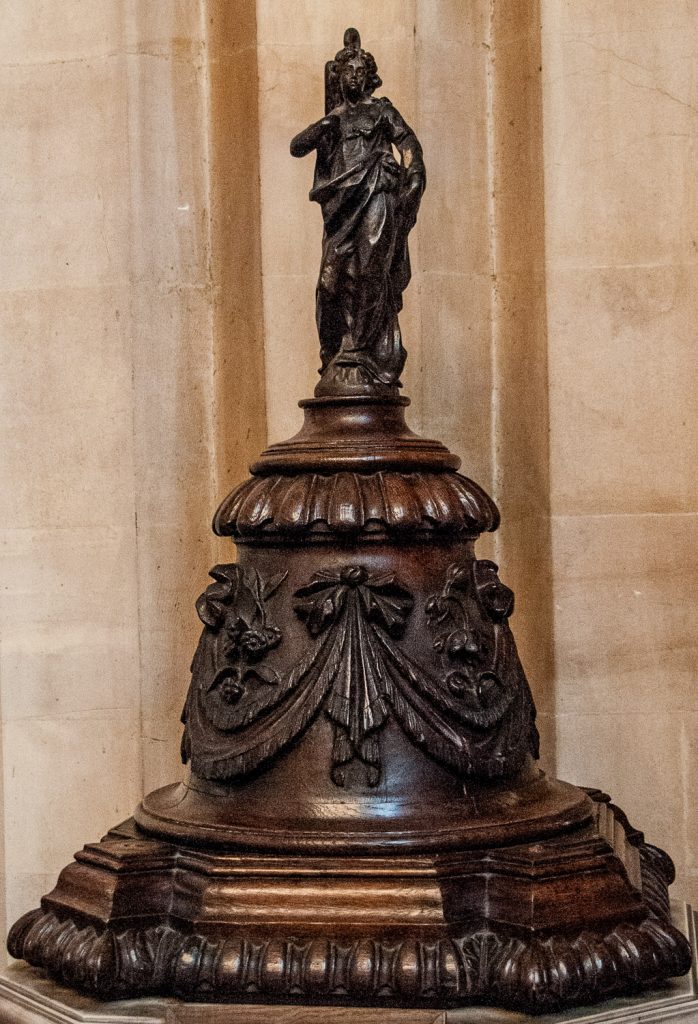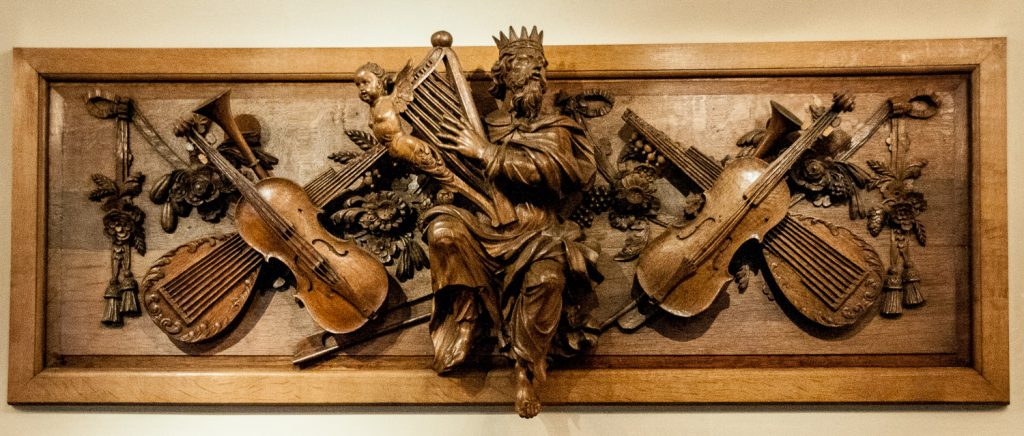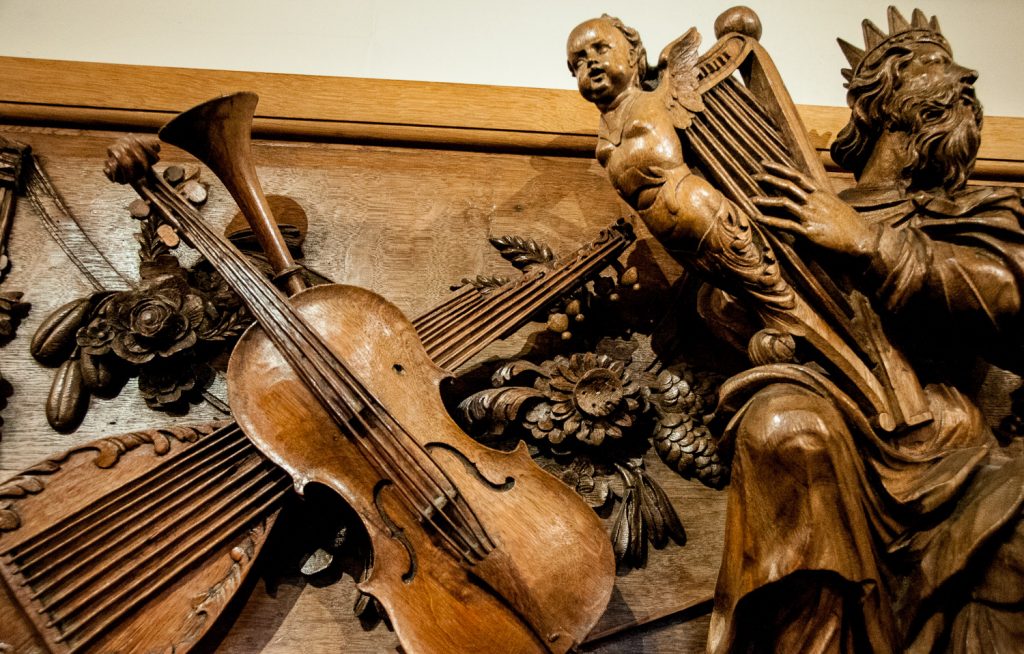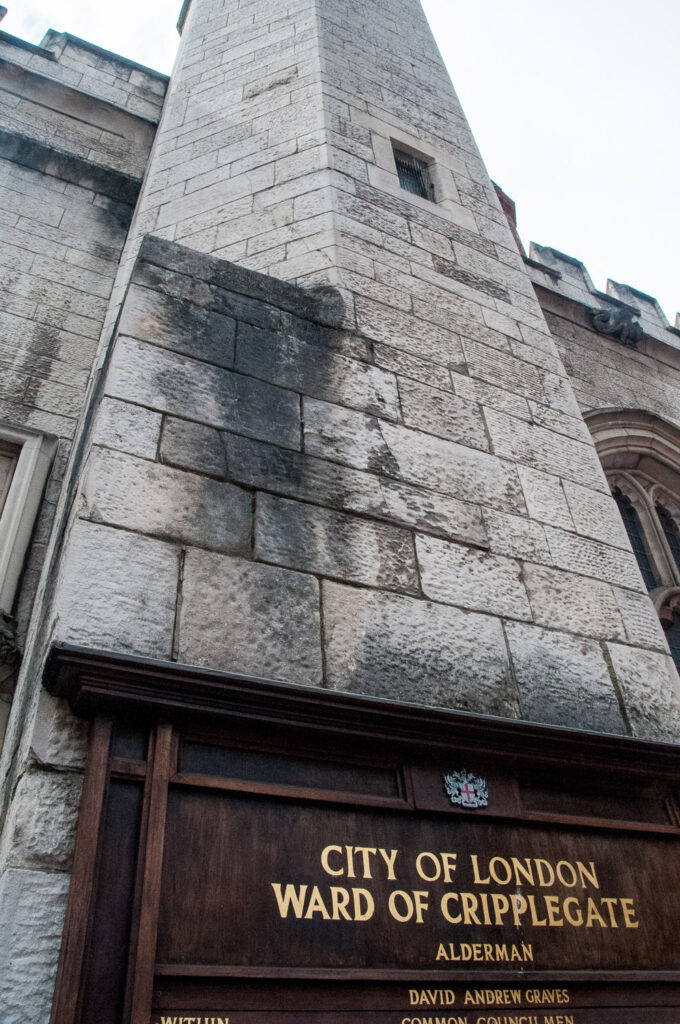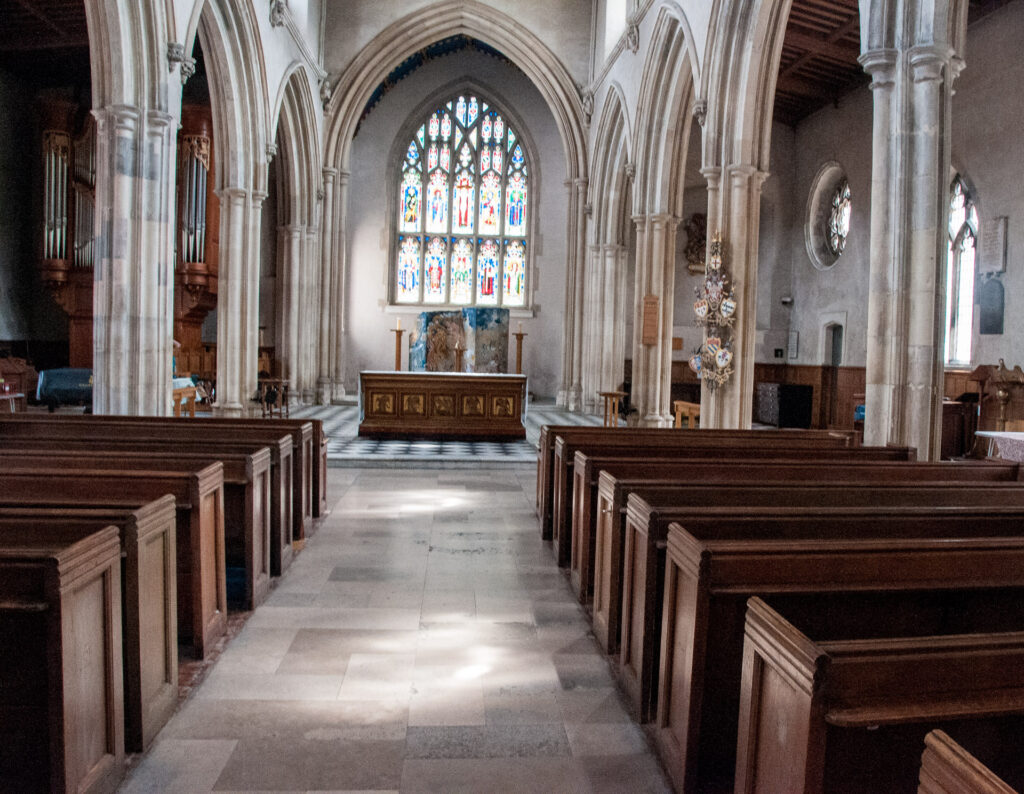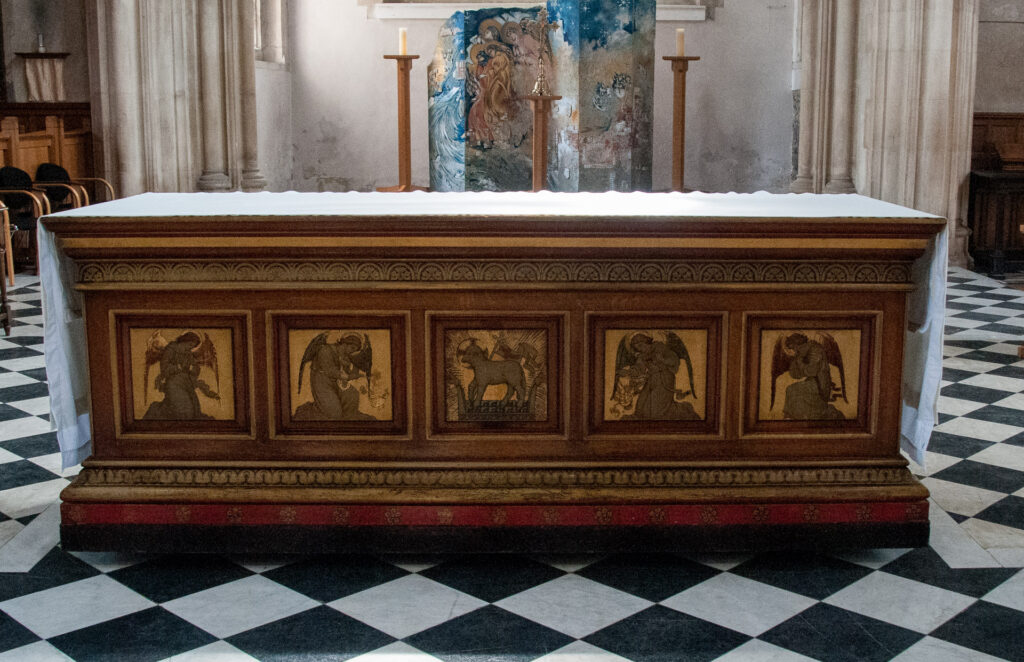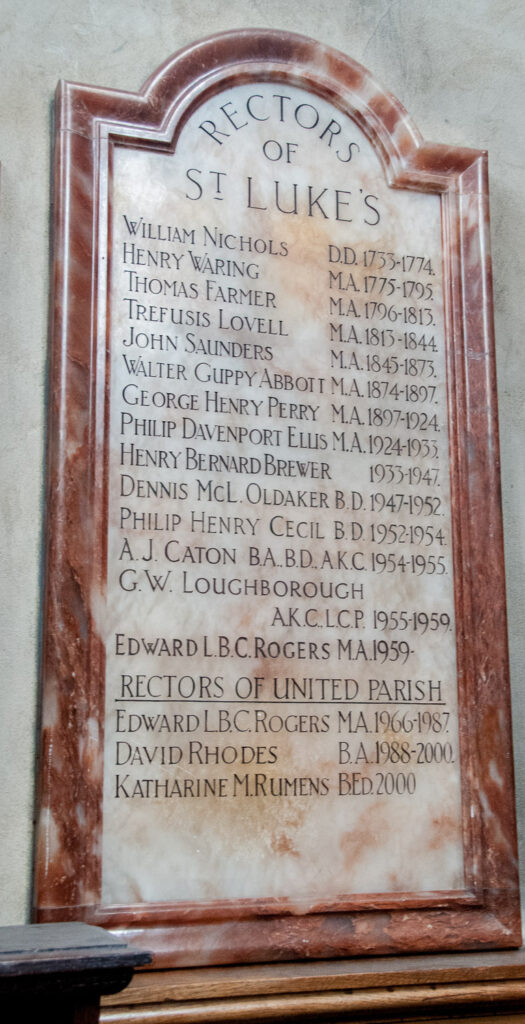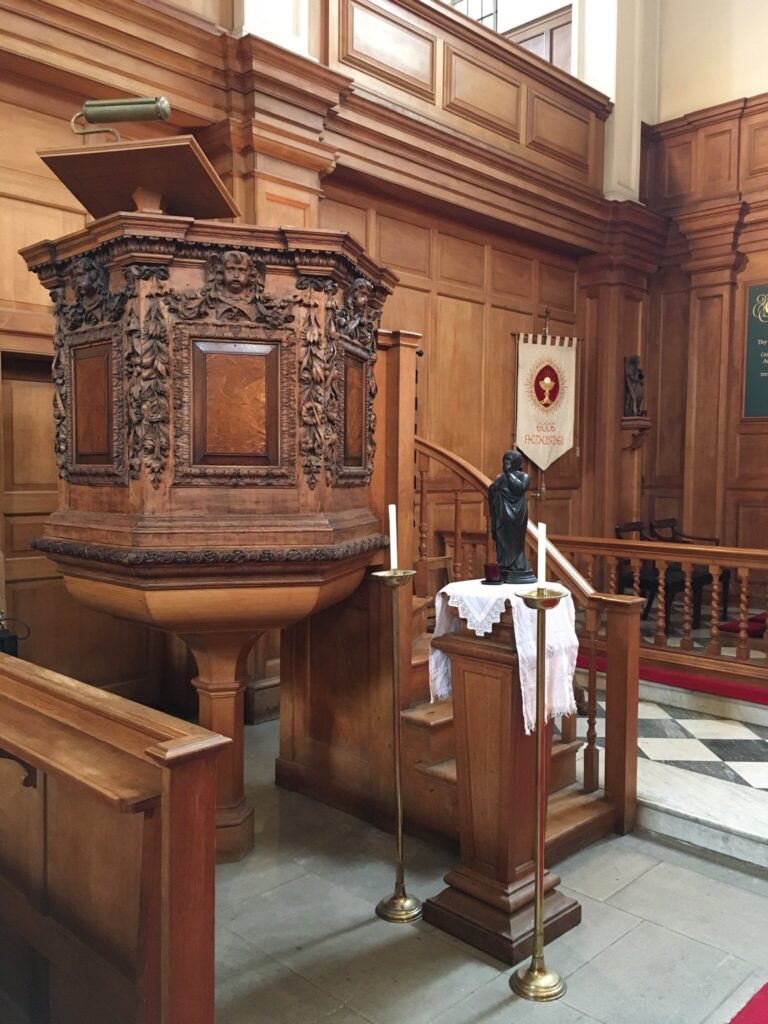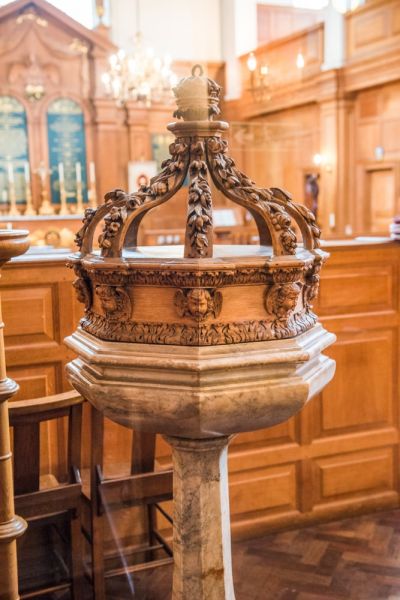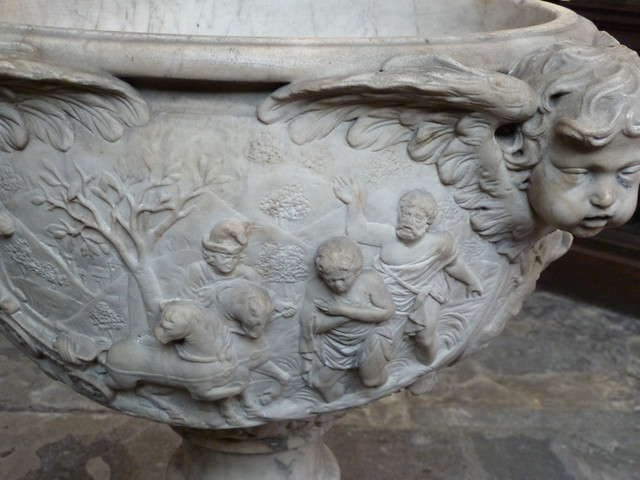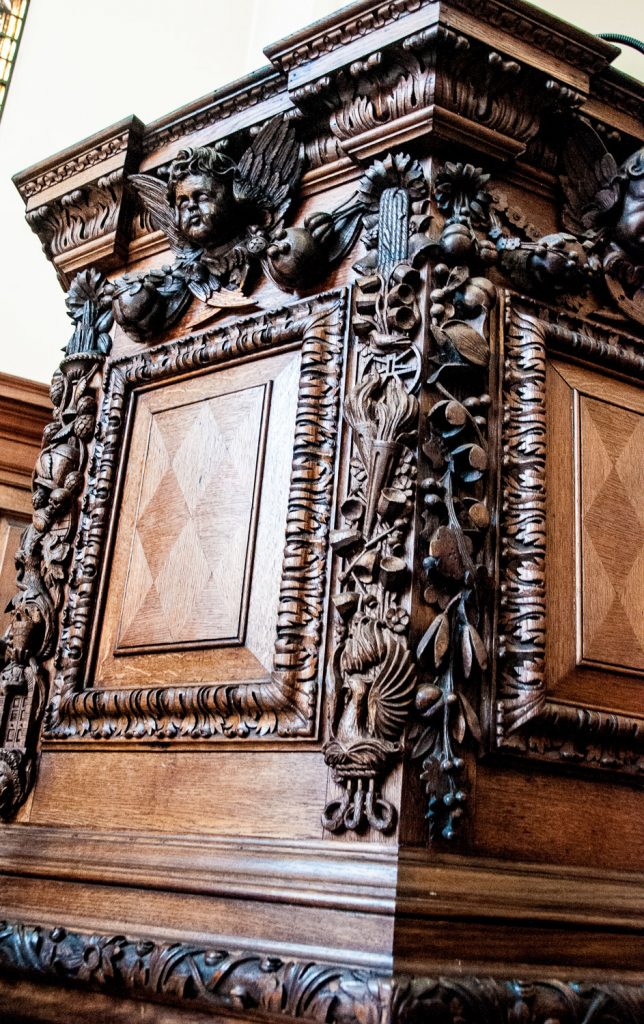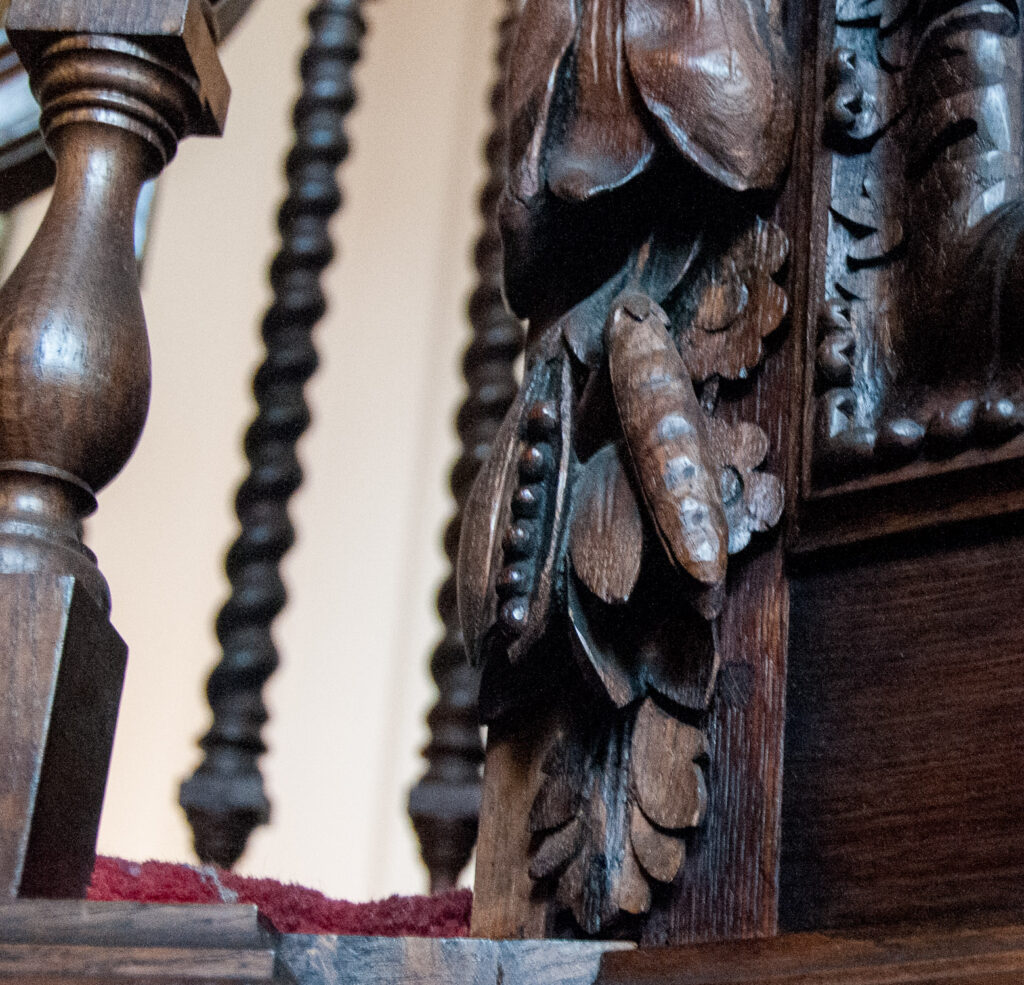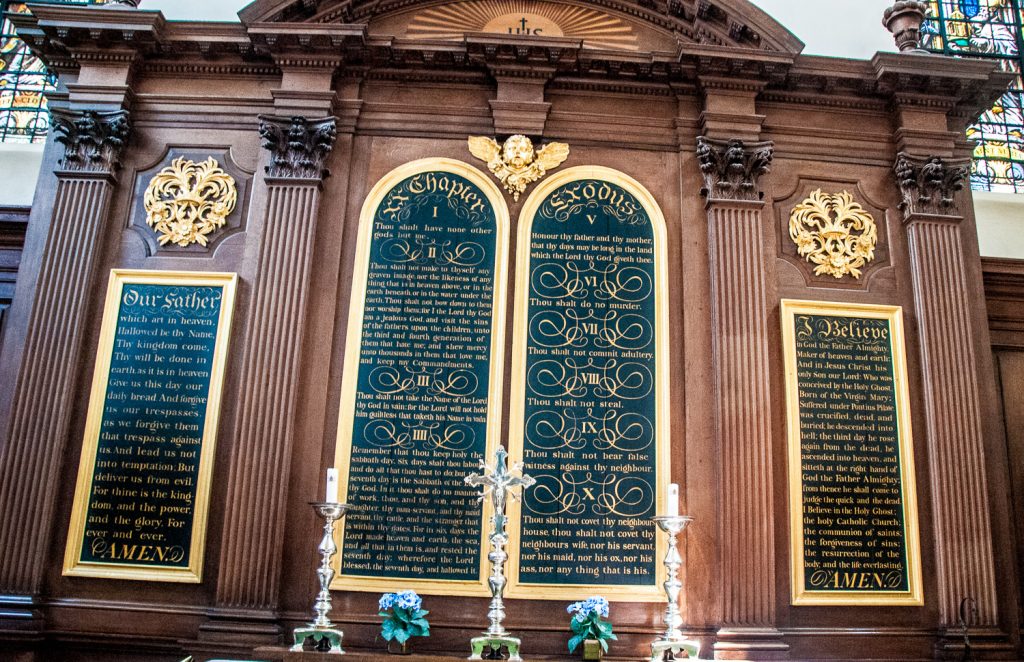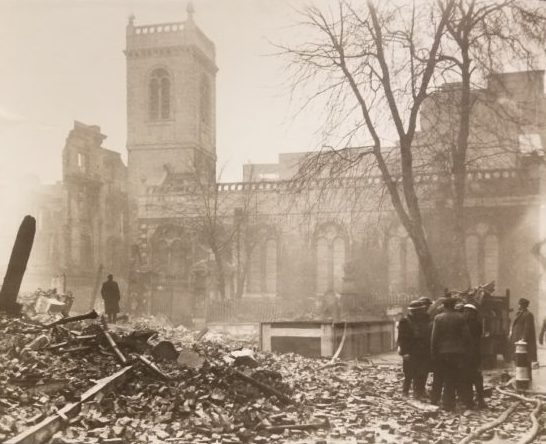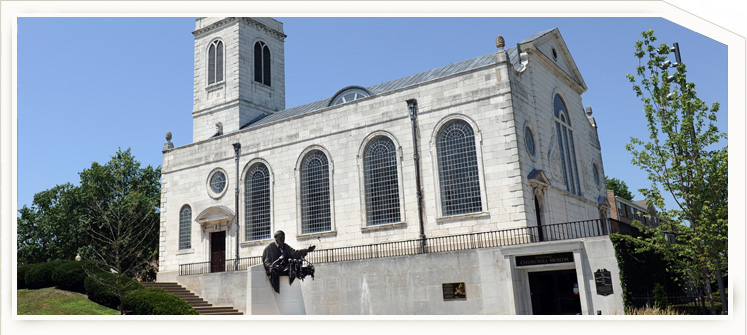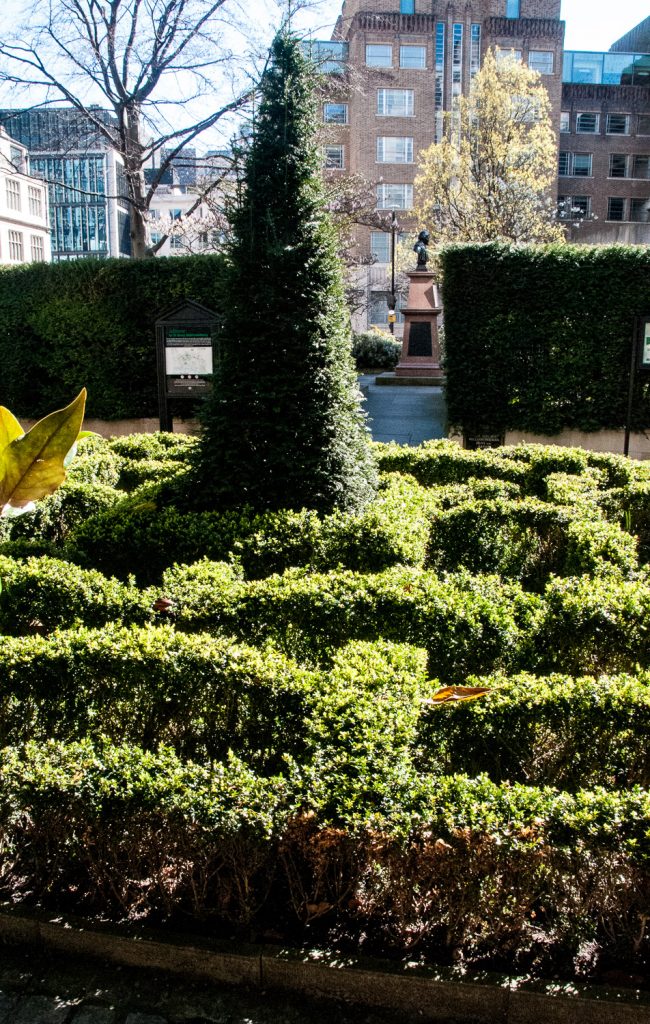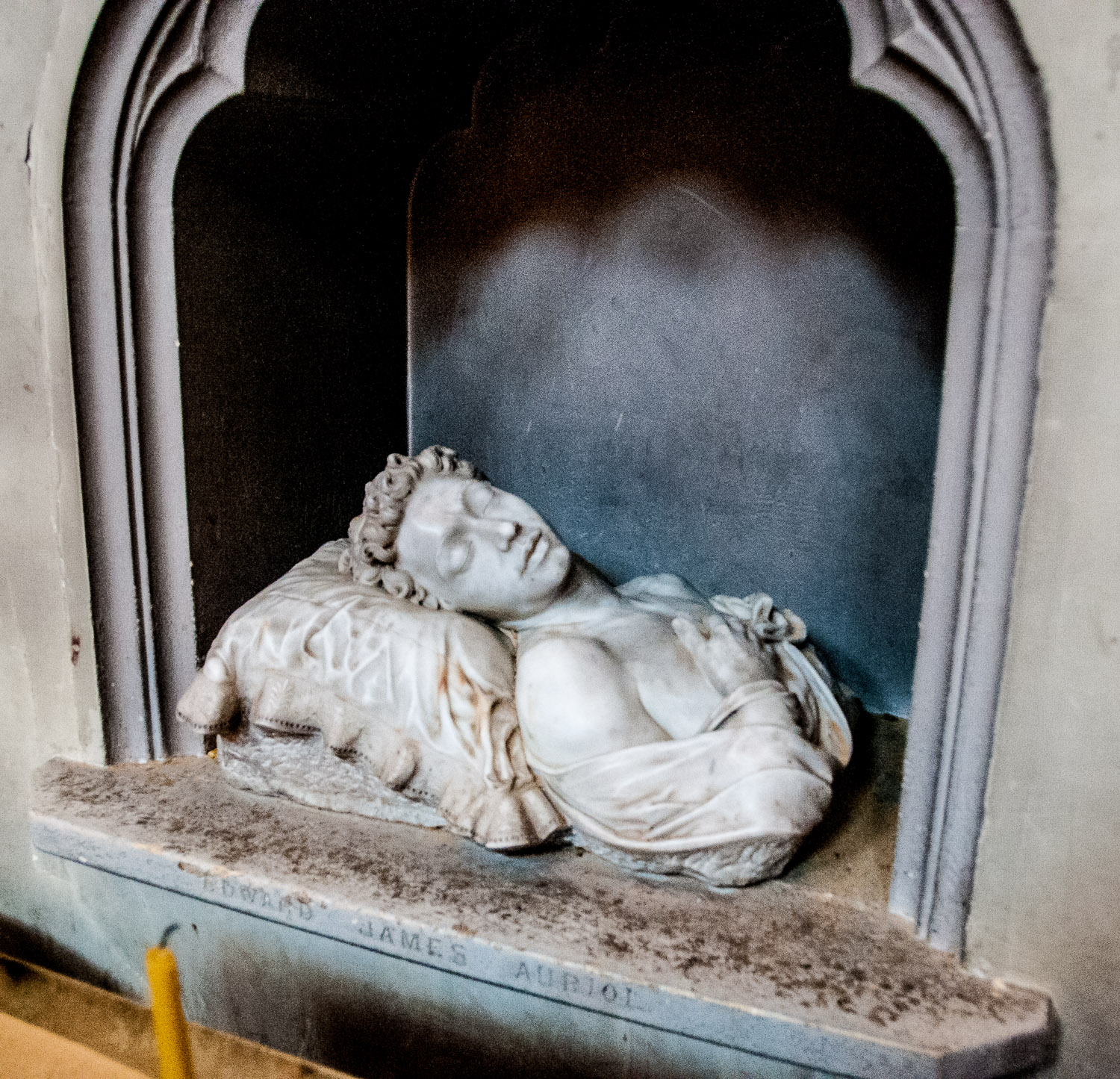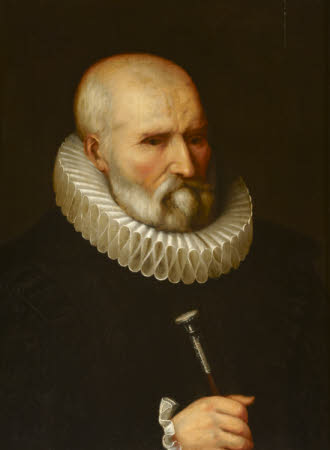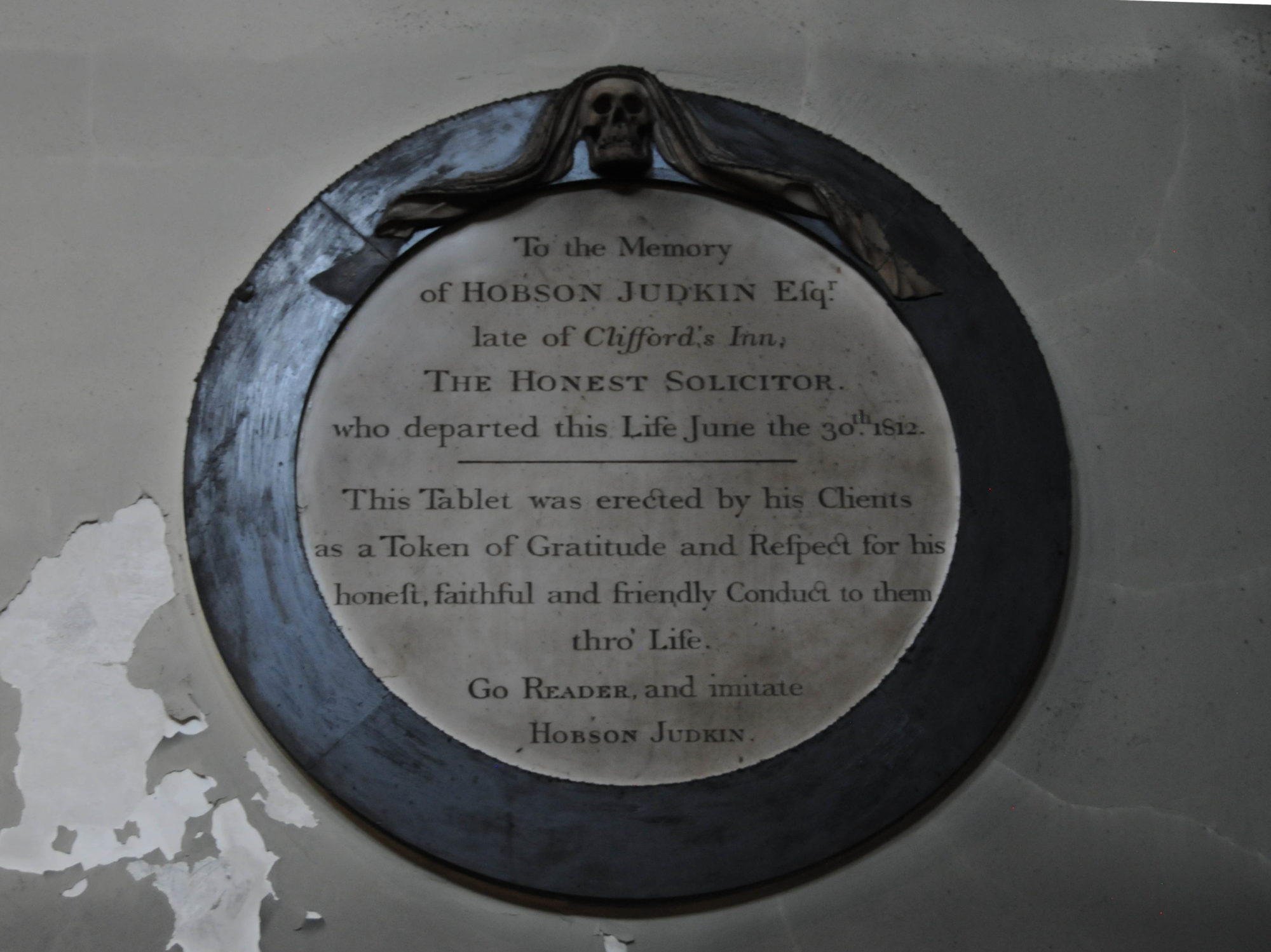I have been researching the history of St Mary Moorfields in Eldon Street (EC2M 7LS) and Catholic worship in the City generally.
For over two hundred years, after the 1559 Act of Uniformity, Catholics were forbidden to worship in public until the Catholic Relief Act of 1791. A chapel was opened in 1686, but had to be suspended in 1689. From 1736 there was a chapel in Ropemaker’s Alley but its altar, fittings and crucifixes were ripped out and destroyed in the Gordon Riots of 1780. This was succeeded by a chapel in White Street. Its replacement in 1820 by a large Classical church in Finsbury Circus sponsored by laypeople marked a turning point in the size and stylistic aspirations of Catholic churches. The final church of the first wave of building that succeeded the Relief Act, it was probably the finest in structure and decoration and also the largest Catholic church in London. It was called St Mary Moorfields after its location …
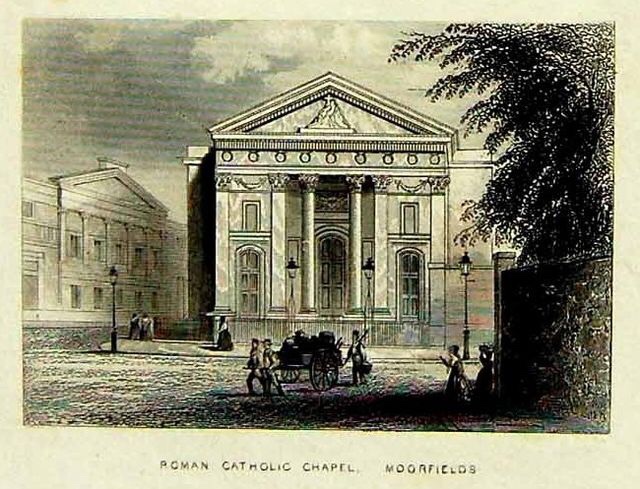
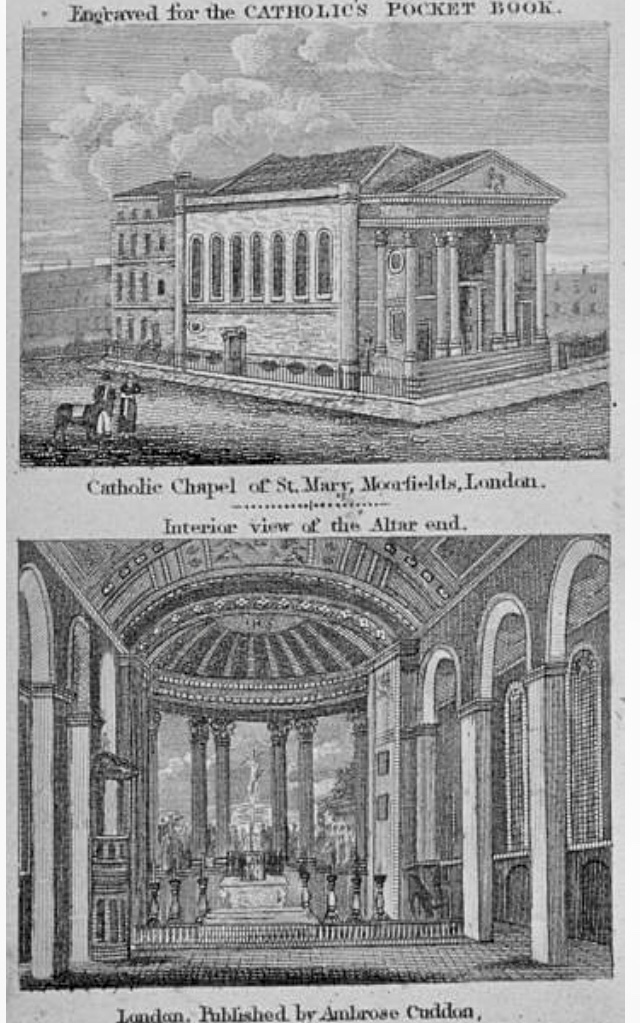

In 1884 the Church acquired a huge site off of Victoria Street in west London. The construction of what would be Westminster Cathedral commenced in 1895 and in 1899, when parts of the new building became usable for worship, the Moorfields church was sold and demolished. It was replaced by the present building in Eldon Street which was designed by George Sherrin and opened on 25th March 1903. The name remained the same even though it was no longer in Moorfields.
The entrance is squeezed in between two shops and if you are walking along the north side of Eldon Street it is easy to miss it completely unless you look up and see the Papal tiara over the doors …
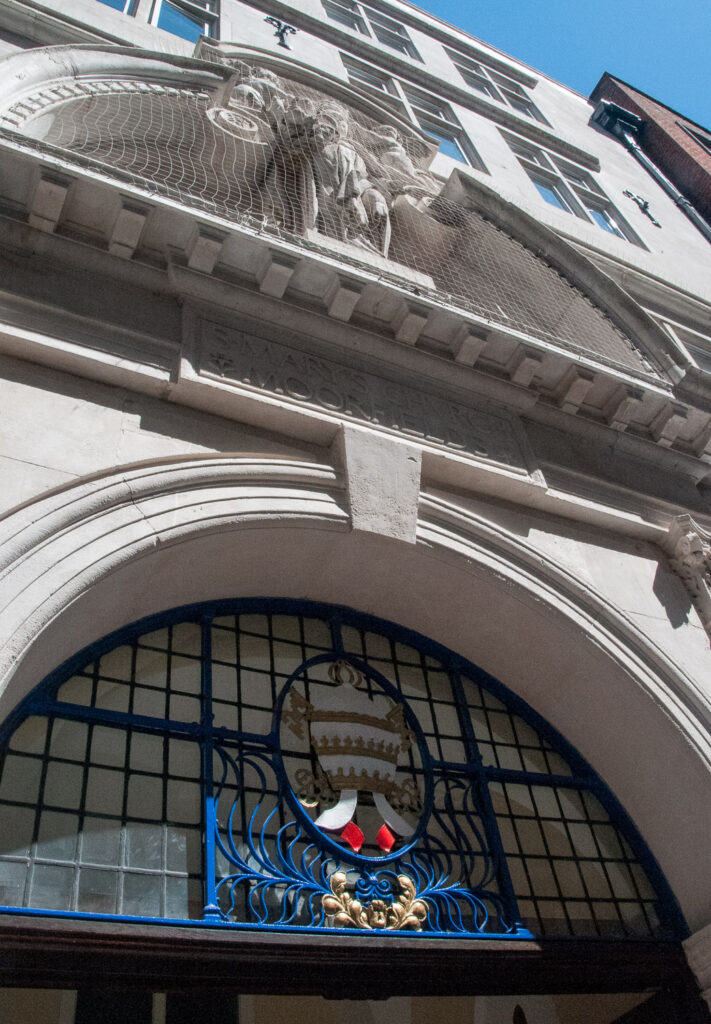
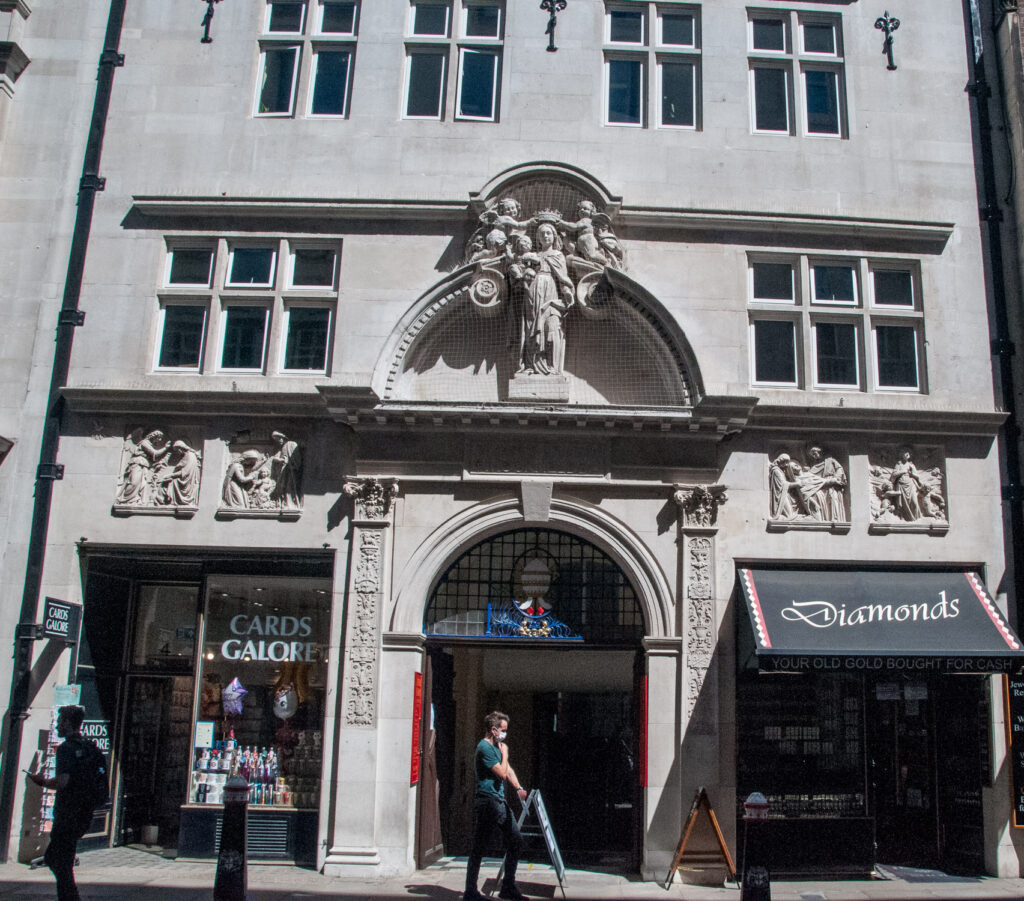
The facade is of Portland stone with some intricate decoration either side of the entrance. Note the hammer, pliers and three nails representing the crucifixion. Further up there is a scourge and a crown of thorns …

Alongside are scenes from the life of the Virgin by J Daymond …
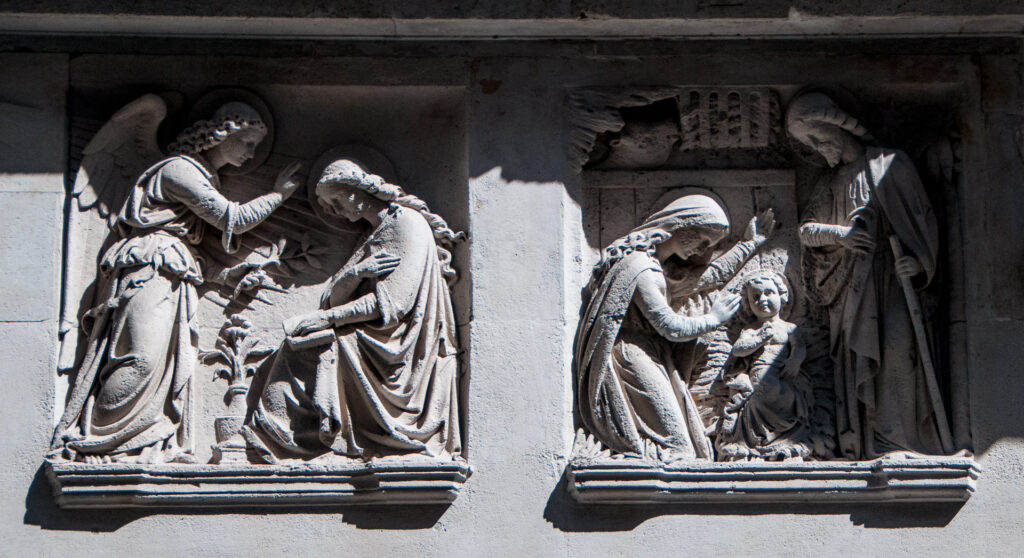
These two represent the Annunciation and the Nativity.
Above them is a statue of the Virgin and child being crowned by cherubs …
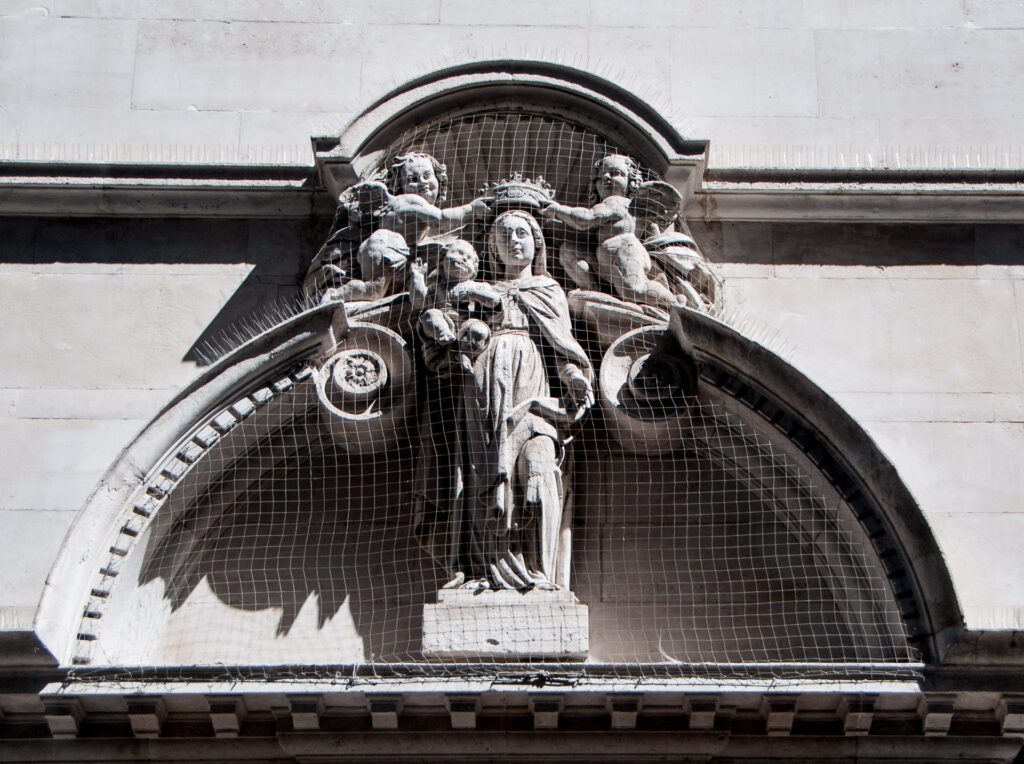
I think the interior is magnificent. The classical como marble columns around the altar come from the old church …
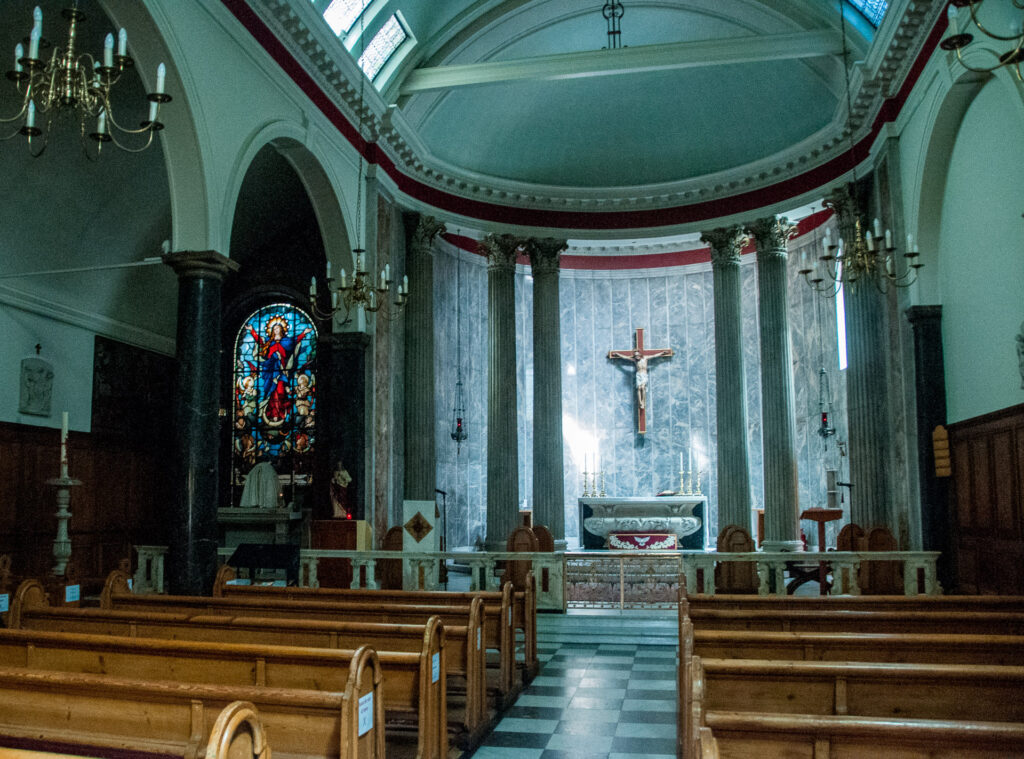
As does the High Altar itself …
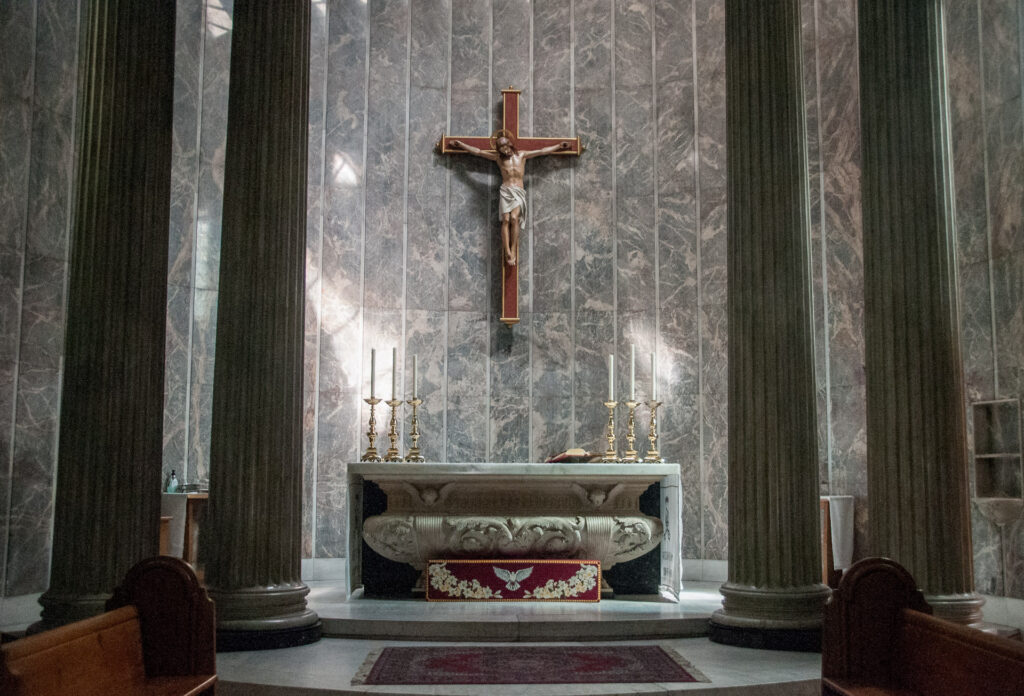
It is modelled in the form of a sarcophagus to recall the ancient practice of celebrating Mass on the tombs of martyr-saints in the catacombs of Rome.
The wide becherubed font also made the journey from Moorfields but the cover is from around 1900 …
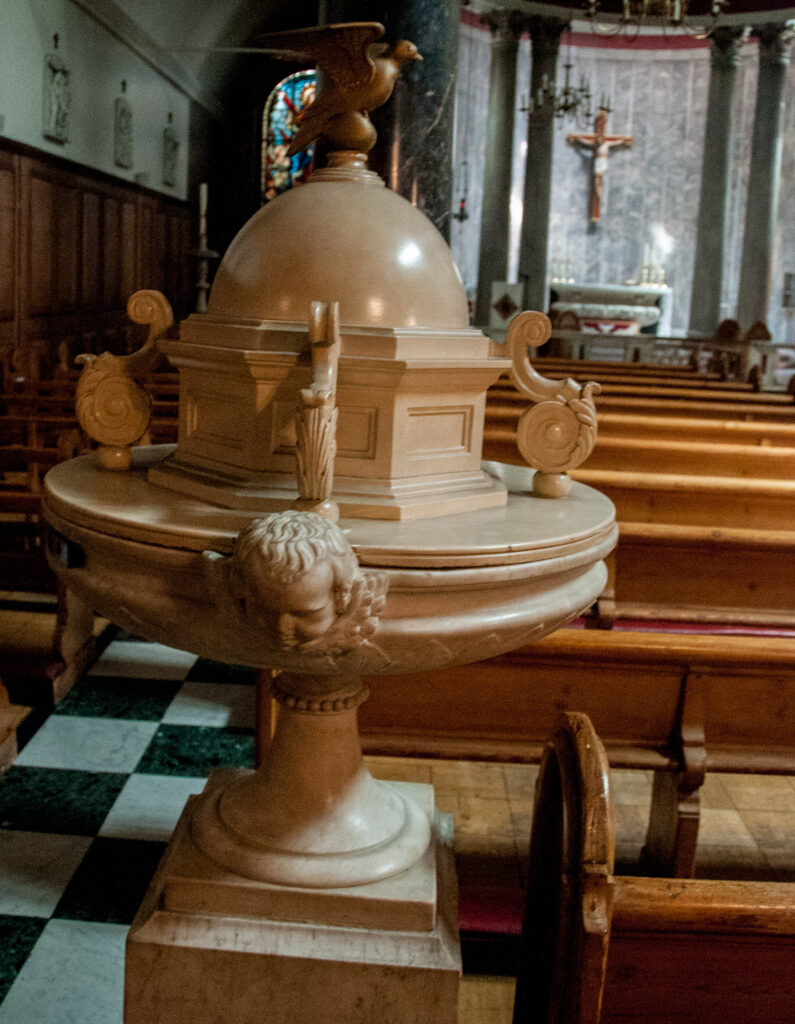

The church enjoys very little natural light. In fact when the building was erected the floor had to be lowered three feet to protect adjoining buildings’ ‘ancient lights’. As a result the stained glass window is artificially illuminated …
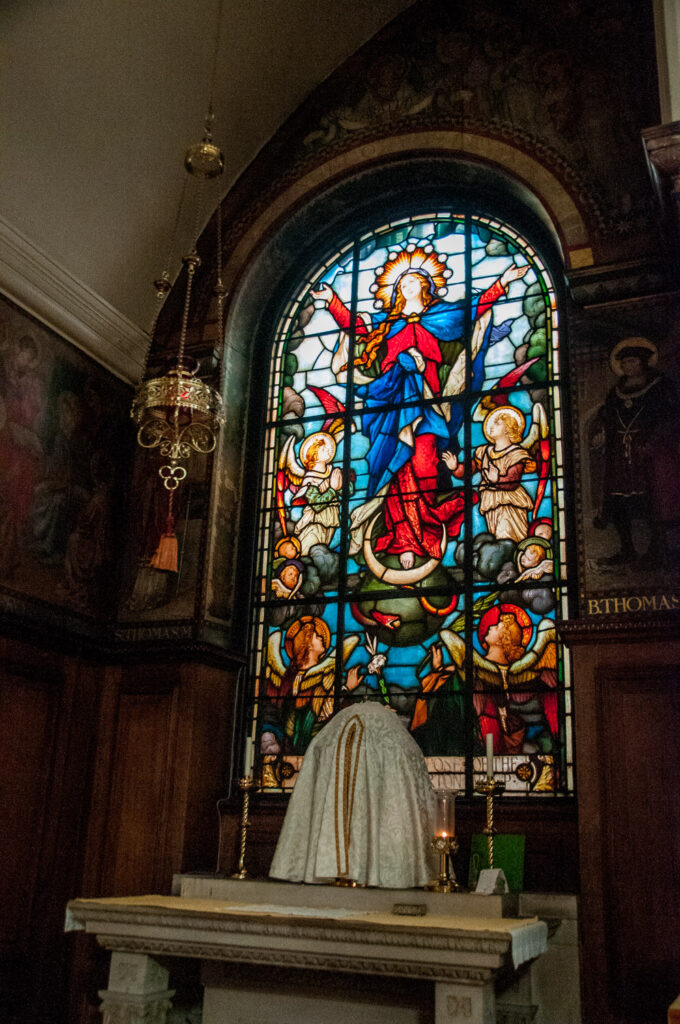
It depicts the Assumption.
One of the side chapels …
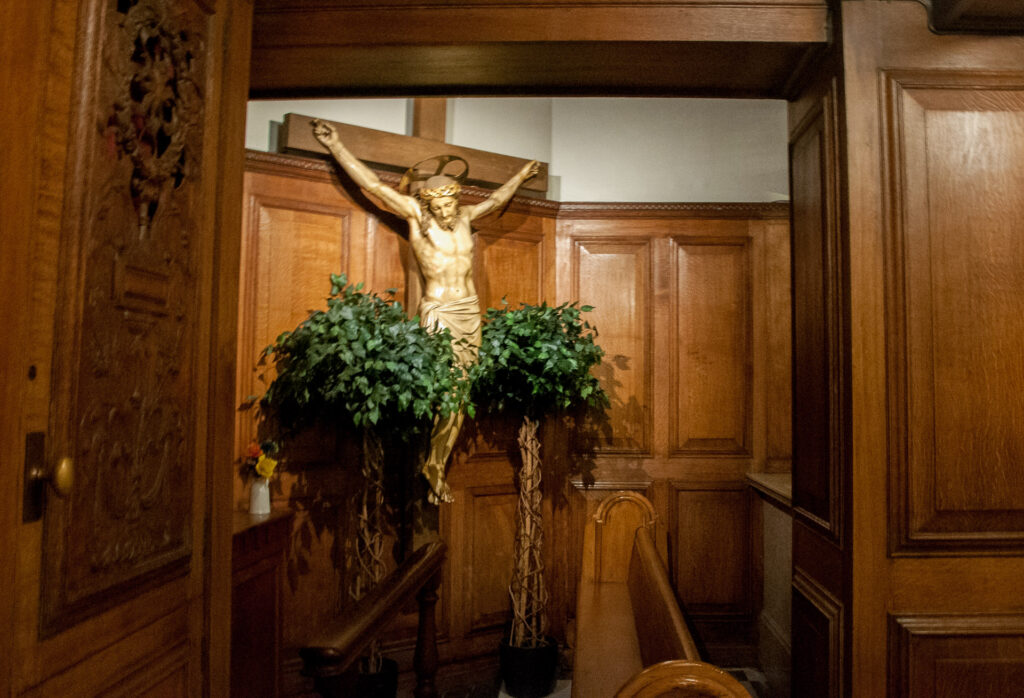
The oak wood carving in the church is very attractive and is also by Daymond …

The tympanum above the shrine to St Thomas More at the south end of the aisle portrays his execution in 1920s mosaic style …
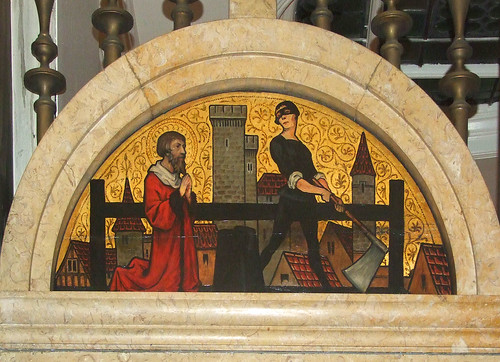
It is a lovely little church to visit and when I have popped in occasionally pre-Covid there was a very atmospheric whiff of incense.
You can find details such as mass times on the website.
Incidentally, there were other survivors from the 1899 demolition, four stained glass windows which found their way to St Joseph’s Lambs Passage (EC1Y 8LE), a small chapel in the basement of a former school of 1901. Despite what the sign on the building says, it is not actually a church but a ‘chapel of ease’ to St Mary’s. Such chapels were built within the bounds of a parish for the attendance of those who could not reach the parish church conveniently …
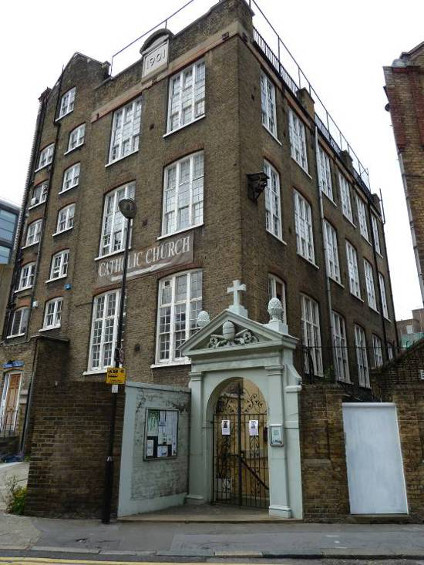
As a result of wartime damage only two windows survive and this is one of them (The Agony in the Garden). I wasn’t able to access the building to take pictures so the image comes from the internet …
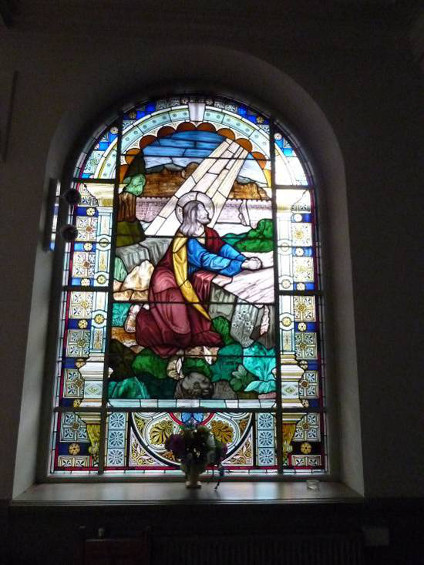
Details of the chapel, its history, services and place in the community can be found here.
Remember you can follow me on Instagram :
